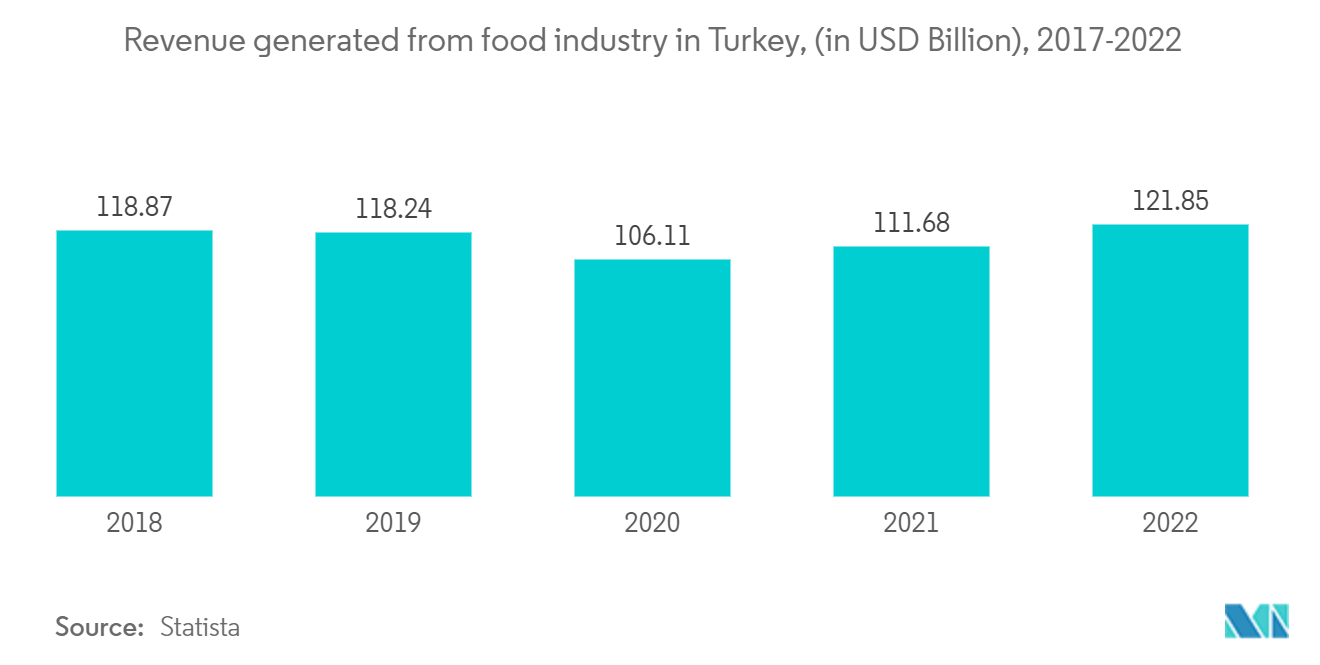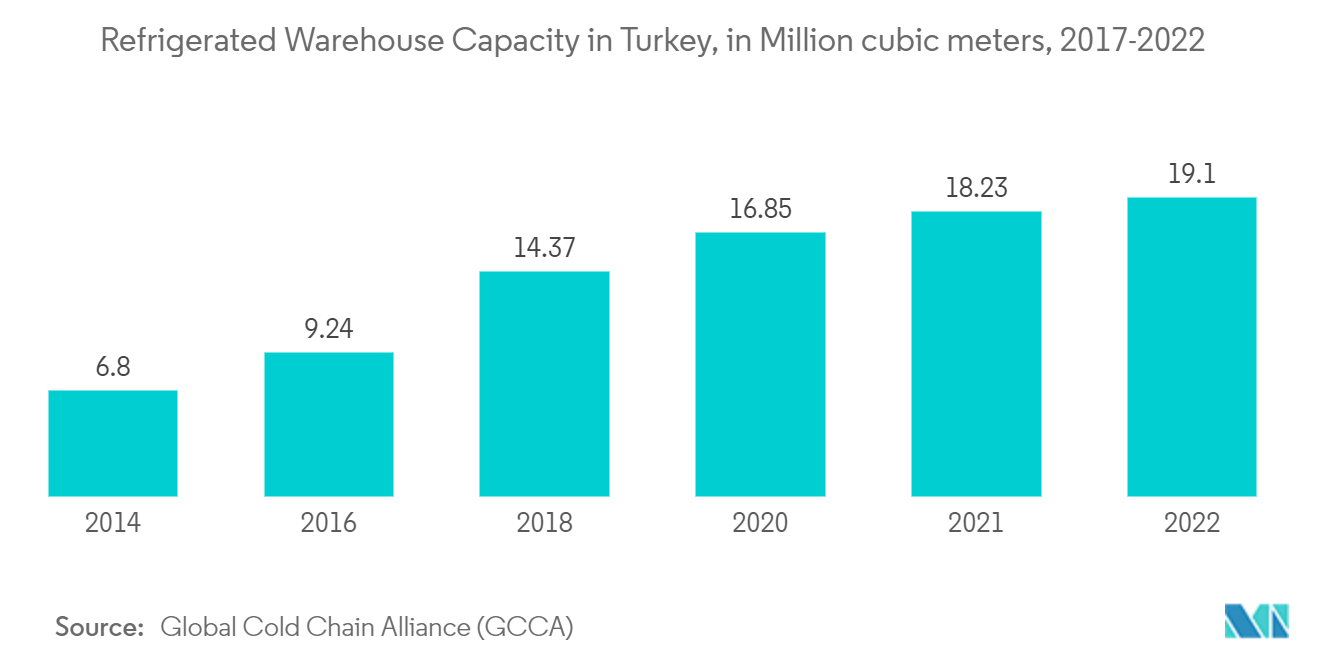Market Trends of Turkey Cold Chain Logistics Industry
Increase in Demand for Fresh and Frozen Foods Driving the Market
Horticultural production, including fruits, vegetables, and flowers, has been emerging as a major economic activity in Turkey. The diverse ecosystems make it economically possible to grow a wide range of horticultural crops. Turkey is one of the largest producers of hazelnuts, cherries, figs, apricots, and pomegranates. The country also produces quinces, watermelons, cucumbers, green peppers, lentils, pistachios, apples, tomatoes, eggplants, olives, tea, chickpeas, sugar beet, almonds, onions, lemons, grapefruit, cotton, and barley.
Turkey has a large domestic market of 85 million people, with more than 15 million living in Istanbul. Therefore, despite Turkey being one of the world's largest exporters of fruits and vegetables, the domestic market is also extremely important.
It is not surprising that recently Turkish farmers have started investing in variety renewal and raising product quality standards to be able to export the maximum outside our region, focusing primarily on India and Southeast Asian countries, the European Union, and rich countries of the Middle East.
An important aspect of state regulation is ensuring temperature regimes by all participants in the fruit and vegetable business when transporting, for example, berries and mushrooms. Although other fruits and vegetables are transported and sold in wholesale markets without refrigeration, the requirement to refrigerate even a limited range is a huge step compared to current practice in the fruit and vegetable markets of the Caucasus and Central Asia, where most retailers violate the temperature regimes.

Government Initiatives Driving the Growth of the Market
The Turkish government has been heavily investing in the cold chain infrastructure of the country, aiding in the increasing warehousing capacity. The government announced it would pour USD 200 billion into infrastructure projects to support its ambitious plan to increase trade levels to USD 1.1 trillion by 2023. Turkey uses the option of fiscal incentives to channel domestic and foreign investments for industrial development and rural-urban integration. These incentives or tax expenditures are usually available to investors to promote private investment activities in selected sectors/regions, depending on the scale of investment. According to the Ministry of Industry and Technology, investment companies can invest in the cold storage sector, which will be considered under the 'Regional Investment Incentive scheme.' Under this scheme, the companies that invest in cold storage may get a tax reduction of up to 50%. The Turkish government also increased spending on infrastructure R&D, while in 2015, the government spent USD 12 billion. In 2020 the spending increased to USD 25 billion.


